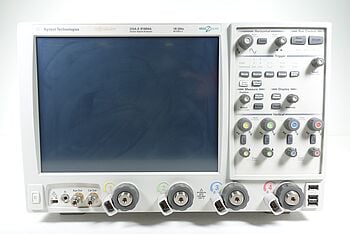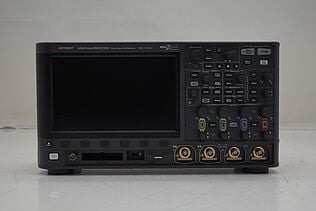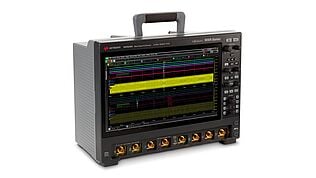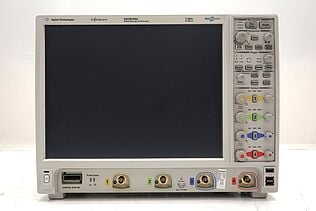- Introduction
- Understanding Electrical Signals
- Types of Electrical Signals
- Signal Characteristics
- Amplitude
- Frequency
- Phase
- Waveform
- Understanding Waveforms
- Implications of Different Waveforms
- Electrical Signal Processing
- Signal Analysis
- Application in Circuit Design
- Optimizing Signal Integrity
- Electrical Signals and Oscilloscopes
- Using Oscilloscopes for Signal Analysis
- Advanced Concepts in Electrical Signals
- Signal-to-Noise Ratio (SNR)
- Fourier Transform
- Summary of Electrical Signal Characteristics
- Conclusion
- Whenever You’re Ready, Here Are 5 Ways We Can Help You
Did you know that the average smartphone contains thousands of electrical signals at any given moment, each performing a vital function?
From the simplest gadgets to complex space satellites, electrical signals form the backbone of modern technology.
This article explores what an electrical signal is, its types, characteristics, and the vital role it plays in electronics and communication.
Understanding Electrical Signals
An electrical signal is a form of energy transmission through electric charges. In essence, it's the movement or flow of electrical energy, carrying information from one point to another.
Types of Electrical Signals
Electrical signals primarily fall into two categories: analog and digital signals.
- Analog signals: These signals vary continuously in time and amplitude. They are characterized by their smooth, wave-like nature.
- Digital signals: In contrast, digital signals switch between discrete values, typically representing binary '0s' and '1s'.
| Key Takeaway |
|---|
| Understanding electrical signals, with their diverse characteristics and behavior, is fundamental in electronics and communication. Understanding signal processing, analysis, and knowing how to use tools like oscilloscopes and Fourier Transforms is crucial for engineers. |
Certified Refurbished Oscilloscopes On Sale Now
Signal Characteristics
Electrical signals possess specific characteristics that define their behavior and functionality. Each characteristic contributes uniquely to the signal's overall profile and usability.
Amplitude
Amplitude refers to the peak value of the signal, representing its maximum extent of variation. In practical terms, amplitude often correlates to the strength or power of the signal. Higher amplitude can imply a stronger signal, but also potentially more power consumption and greater susceptibility to noise.
Frequency
Frequency is the rate at which the signal repeats itself per second, measured in Hertz (Hz). It's a critical aspect, especially in timing and synchronization of signals. The frequency determines how fast the information is transmitted and can also influence the bandwidth of the communication channel.
Phase
Phase indicates the position of the waveform relative to a reference point, often another signal. It's essential in signal synchronization, especially in systems where timing precision is crucial, like in digital communication systems. Phase differences can lead to constructive or destructive interference, affecting signal clarity and integrity
Waveform
The waveform is the shape of the signal over time, reflecting its characteristics in a graphical format. It's a visual representation of how the signal varies and is fundamental in signal analysis. Different waveforms represent different types of signals and have various implications in electronics and communication.
Understanding Waveforms
Waveforms are not just visual aids; they hold the key to understanding the nature of the signal. Common waveform types include:
- Sine: Representing periodic oscillations, sine waves are fundamental in AC (alternating current) theory and radio frequency (RF) signals.
- Square: With abrupt transitions between high and low values, square waves are integral in digital electronics and timing circuits.
- Triangular: Characterized by their linear rise and fall, these are used in audio synthesis and signal processing.
- Sawtooth: Known for their ramp-up and abrupt fall, sawtooth waves find applications in television broadcasting and music synthesis.
Implications of Different Waveforms
Each waveform type carries specific properties that make it suitable for various applications.
- Sine waves: Ideal for representing pure frequencies, used in RF and audio applications.
- Square waves: Essential in digital logic and timing, where clear, distinct states are necessary.
- Triangular waves: Useful in audio signal processing due to their harmonic content.
- Sawtooth waves: Used in video signals and in generating specific musical tones.
Understanding the waveform of an electrical signal is not just about recognizing its shape. It's about understanding the signal's behavior, its interaction with other signals and components, and its suitability for a given application.
Electrical Signal Processing
Signal processing plays a pivotal role in electrical engineering, transforming raw signals into useful information. This process is critical in various applications ranging from telecommunications to control systems.
Signal Analysis
Engineers employ various techniques in signal analysis to decipher the information contained in electrical signals.
- Amplitude and frequency analysis: This involves measuring the strength (amplitude) and rate of repetition (frequency) of the signal. Amplitude analysis can reveal signal power and potential for distortion, while frequency analysis is key in understanding the signal's speed and bandwidth requirements.
- Signal filtering: Filtering is the process of removing unwanted frequencies or noise from a signal. Effective filtering enhances the clarity and quality of the signal. Filters can be:
- low-pass (allowing frequencies below a threshold)
- high-pass (allowing frequencies above a threshold)
- band-pass (allowing frequencies within a certain range)
- band-stop (excluding a range).
- Signal modulation and demodulation: Modulation involves altering the signal for efficient transmission, especially over long distances or through wireless mediums. Demodulation is the reverse process, extracting the original information from the modulated signal. These processes are fundamental in radio, TV broadcasting, and cellular communications.
Application in Circuit Design
The understanding and manipulation of electrical signals are central to circuit design. This knowledge aids in:
- Designing efficient signal paths: Crafting paths that allow signals to travel with minimal loss and distortion.
- Minimizing signal interference and noise: Implementing design strategies to reduce the effects of external and internal noise sources.
Optimizing Signal Integrity
Signal integrity refers to the quality and reliability of an electrical signal passing through a circuit. It makes sure the signal remains undistorted and accurate from source to destination. Key aspects include:
- Impedance matching: Adjusting the source and load impedances to minimize signal reflections and power loss.
- Proper routing: Designing circuit layouts that avoid crosstalk between signal lines and reduce electromagnetic interference (EMI).
- Use of decoupling capacitors: Placing capacitors near power supply connections to smooth out fluctuations and reduce noise.
- Controlled signal rise and fall times: Designing drivers and receivers that match the signal's speed requirements, preventing overshoot and ringing.
In high-speed and high-frequency circuits, maintaining signal integrity becomes even more challenging. The use of differential signaling, shielded cables, and careful PCB layout planning are additional strategies used to preserve the integrity of the electrical signals.

Electrical Signals and Oscilloscopes
Oscilloscopes are an indispensable tool for any electrical engineer or technician. These instruments visually display electrical signals as waveforms, revealing a wealth of information about the signal's behavior, performance, and characteristics.
Using Oscilloscopes for Signal Analysis
Oscilloscopes visualize electrical signals and allow for detailed analysis and measurement of various signal properties.
Waveform Observation
The primary function of an oscilloscope is to observe the waveform of a signal. This visual representation lets engineers and technicians:
- Identify the type of signal (e.g., sinusoidal, square, triangular)
- Detect anomalies like spikes, dips, or irregular patterns
- Assess the stability and consistency of the signal over time
Frequency Measurement
Determining the frequency of a signal is crucial in applications where timing is critical. Oscilloscopes can measure frequency directly by analyzing the time interval between waveform repetitions. This measurement is vital in:
- Synchronizing signals in digital systems
- Tuning frequencies in radio and communication equipment
- Diagnosing issues in alternating current (AC) circuits
Amplitude Analysis
Amplitude analysis involves measuring the peak-to-peak voltage of a signal, which is the difference between its highest and lowest points. This measurement is critical in understanding several aspects:
- Signal power: Higher amplitude can indicate a more powerful signal.
- System compatibility: Ensures that the signal amplitude is within the operational range of the circuit components.
- Distortion analysis: Identifies if the signal amplitude exceeds certain thresholds, which can lead to distortion or clipping in audio and video signals.
Oscilloscopes can measure amplitude in real time, providing instant feedback on signal strength. This capability is especially valuable in testing and troubleshooting, where immediate observation of how a signal responds to changes or external influences is crucial.
Advanced Concepts in Electrical Signals
Studying advanced concepts in electrical signals helps us better understand how signals behave and interact in complex systems. Two key concepts that stand out in this realm are the Signal-to-Noise Ratio (SNR) and the Fourier Transform.
Signal-to-Noise Ratio (SNR)
Signal-to-Noise Ratio (SNR) is a critical concept in the field of electrical engineering, particularly in communications and signal processing. It quantifies the level of a desired signal to the level of background noise. SNR is typically expressed in decibels (dB). A higher SNR indicates a clearer, more distinguishable signal, which is crucial in achieving high-quality data transmission.
- Importance in communication systems: In systems like radio, television, and data communication networks, maintaining a high SNR is essential for clear, error-free signal transmission.
- Impact on data quality: SNR directly affects the quality of the data received. A low SNR can lead to increased error rates and loss of information.
Fourier Transform
The Fourier Transform is a powerful mathematical tool used to analyze the frequency components of a signal. It transforms a time-domain signal into its constituent frequencies, providing a spectrum of the signal's frequency components.
- Decomposing complex signals: Fourier Transform is particularly useful in decomposing complex signals into simpler sinusoidal components. This decomposition helps in understanding the signal's behavior in the frequency domain.
- Applications in signal processing: It finds applications in a wide range of areas such as audio signal processing, image processing, and in the analysis of electrical circuits.
- Frequency analysis and filtering: By identifying the frequency components, engineers can design filters to enhance or suppress specific frequencies, which is vital in communications, audio engineering, and noise reduction techniques.
Find The Perfect Oscilloscope
Select up to 3 instruments to compare
Enable Notifications
In order to use this feature, you need to enable notifications.
Manage notification preferences
Summary of Electrical Signal Characteristics
| Characteristic | Description | Importance in Electrical Engineering |
| Amplitude | Peak value of the signal | Vital for determining signal strength |
| Frequency | Rate of signal repetition | Essential for timing and data transmission |
| Phase | Position relative to a reference | Crucial in signal synchronization |
| Waveform | Shape of the signal over time | Important in identifying signal type and quality |
Conclusion
Electrical signals are at the heart of modern electronics and communication, serving as the core medium through which information is transmitted and processed.
This article has covered their essential characteristics, the process of signal analysis, and the advanced concepts vital for sophisticated signal handling. For electrical engineers and related professionals, mastering these aspects is crucial for innovation and efficiency in the field.
To apply these concepts effectively, high-quality equipment is indispensable. The Keysight Used Equipment Store offers a selection of premium used oscilloscopes, spectrum analyzers, function generators, and multimeters, providing the reliability and precision needed for advanced electrical signal analysis. Explore these tools to enhance your capabilities and take your projects to the next level.

Whenever You’re Ready, Here Are 5 Ways We Can Help You
- Browse our Premium Used Oscilloscopes.
- Call tech support US: +1 800 829-4444
Press #, then 2. Hours: 7 am – 5 pm MT, Mon– Fri - Talk to our sales support team by clicking the icon (bottom right corner) on every offer page
- Create an account to get price alerts and access to exclusive waitlists.
- Talk to your account manager about your specific needs.












































